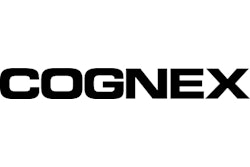Not all processing or packaging machines are designed with identical throughput specifications. And even if they were, variations from machine to machine would inevitably skew the relative rates. Control systems of the various machines must receive feedback from other parts of the line in order for operations in world-class plants to tune the line to its optimum operating effectiveness.
Product tracking has become another key operating function given requirements both from agencies such as the U.S. Food and Drug Administration (FDA) and from the need to conduct a fast and efficient product recall should that ever be required. Tracking requires information coordination among all the machines on the line.
Allpax Products, a division of Pro Mach Inc., manufactures a number of retorts for low-acid food production along with associated automation. A retort, or pressure cooker, is one of the machines on a process line that often must be taught, so to speak, to communicate directly with packaging machines, too.
Jonny Watkins, director of software engineering at Allpax, describes a typical production line producing microwavable bowls of soup. “These are now highly integrated lines. We have to interface to the packaging parts that a lot of times are not Pro Mach machines. They may be German or from other countries.”
In one recent line, upstream machines filled and sealed microwavable bowls of soup. The bowls were fed from the sealing machine onto a conveyor in single file with the first-filled, that is oldest, bowl first. The first bowl filled is used in a destructive test to determine the temperature of the product in the center of the package. Bowls are tracked using 2D bar code read by a Cognex vision system. The oldest bowl is flagged as it proceeds down the line. Operations people pull it off the conveyor, check it again with the vision bar code reading system, and conduct the destructive test.
Meanwhile the rest of the bowls move from the conveyor to baskets that will convey products to the retort. When four baskets are filled, a shuttle transports them to the retorts for processing. The retort door is closed and the operator must enter information derived from the test into the control system in order to set the parameters of the process and to start the system. Temperature and pressure are critical process parameters that must be measured and logged. “We’re tracking the products and the process so that we know how many products were processed, the number of each basket, where it has been, how long it has sat, all in a database program [All Trax] that we have developed,” says Watkins.
Tracking is accomplished using a variety of sensors and the bar code reading vision systems. “At that point, we have basically assured that the product has undergone the proper processes, moved around the system properly and that no unprocessed food has made it to the end of the line,” Watkins says. “In the event of a deviation, the product is moved to a separate queue.”
When the processing system is finished, the shuttle unloads the product to a conveyor unload line and returns for another load of product to be processed. Product now heads to the labeler and case packer. “We update all the logs by capturing data and tracking through the system. Once it’s sent to the labeler, we no longer track it. We just send information to the plant database for reporting purposes,” continues Watkins.
Aside from tracking products, the customer had another request for Allpax on this line. It wanted Allpax to make its lines more efficient. They needed to make the system speed fluctuate based on the output from the filler machines and backup at the case packer. So Allpax set up its control system to synchronize its loading and unloading system with the speed of the packaging line machines. Watkins relates, “A number of networks were involved between the packaging machine supplier and us. We use ControlNet (a networking standard promulgated by ODVA) because you can schedule data packets and know exactly the data transfer rate. It’s a deterministic network on data rate, so we can match efficiencies and machine speeds. The only thing that doesn’t change speed is the retort process itself because of food safety.”
The customer was able to satisfy quality and regulatory concerns as well as improve its overall equipment efficiency through intelligent linking of processing and packaging.


























